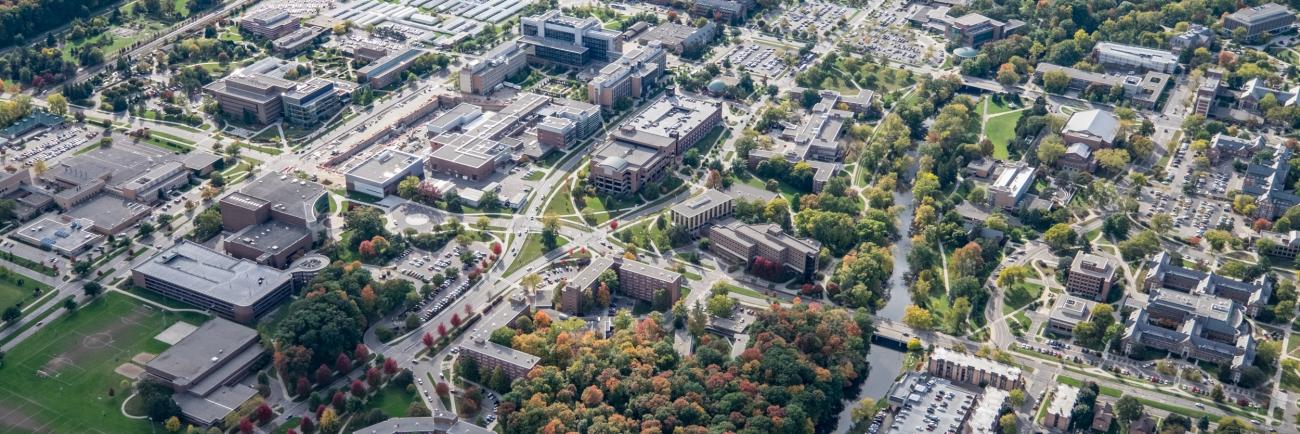University Facilities and Land Use Plan

2022 Facilities and Land Use Planning Process
MSU has begun a comprehensive Facilities and Land Use Plan review for the East Lansing campus and statewide facilities. Visit campusplan.msu.edu for more extensive information about the effort.
A Facilities and Land Use Plan is a roadmap for any future demolition, construction, alterations or maintenance of the campus's physical spaces. This plan will envision how the campus should look, feel, and function. Once finalized, the campus plan will ensure that MSU's buildings, facilities and infrastructure best support's MSU's world-class teaching, learning and research missions.
Campus planning is also an essential opportunity for users of MSU's physical space to provide feedback to those who build and maintain it.
The planning process will:
- Identify the impacts of land use, facilities and infrastructure on supporting the academic, research, and out-reach mission now and into the future.
- Develop a comprehensive and strategic framework plan for guiding future decisions regarding land use, buildings, and facilities that supports the institution’s three mutually reinforcing strategic plans and the Academic Strategic Plan Implementation (in progress).
- Translate the university’s academic, research, outreach, and operational needs into physical recommendations for the campus and off-campus facilities through an open, inclusive, publicly engaged, and data-driven process.
How the plan is designed
Creation of the Facilities and Land Use Plan is guided in large part by MSU's stewardship and sustainability strategic objectives. The priorities for the planning process include:
- Ensuring faculty, staff, and students can live, work and learn in buildings and spaces that promote health and wellness, have access to green space, and enjoy pedestrian and bicycle-friendly design.
- Prioritizing diversity, equity and inclusion; faculty staff and student success; and sustainable health in the physical environment of MSU’s campuses and facilities.
- Ensuring wayfinding is accessible for all users.
- Enhancing public art on campus that represents multiple modalities and diverse perspectives.
